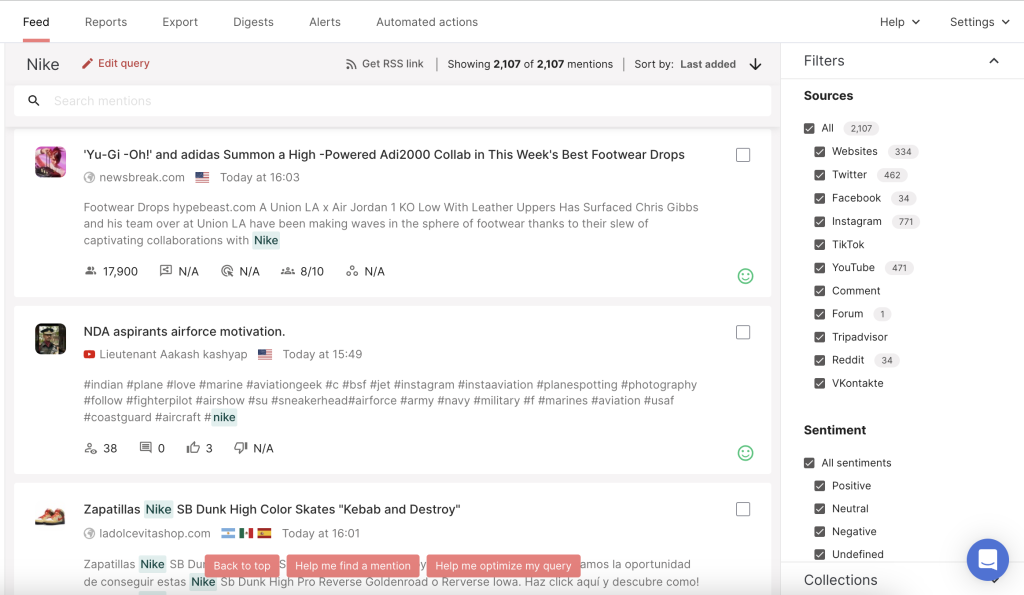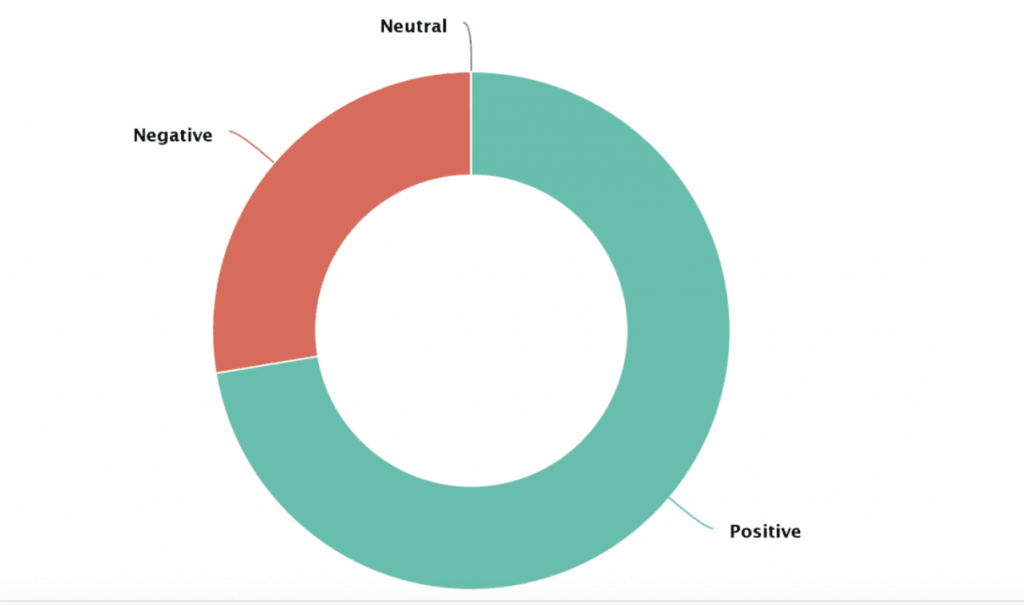Do you ever feel like your competition is one step ahead of you? It seems like they know what you’re doing before you do, and they’re always in the lead?
If this feels like a familiar situation – they probably conducted a good competitor analysis.
? Read: Competitive Analysis: All You Need to Know
Let’s see what competitor analysis is, why it should be done and how to do it with the help of media monitoring.
What is Competitor Analysis?
Competitor analysis evaluates your competitors and their strategies to determine your business’s strengths and weaknesses relative to theirs.
You can then use this information to improve your strategy, boost your marketing efforts, or set yourself apart from the competition.
When doing a competitor analysis, it is essential to examine factors such as:
- Your position in the market vs. your competition’s position
- Your public perception vs. your competition’s public perception
- The competition’s strengths and weaknesses, products, services, prices, customer loyalty, and where you stand compared to them
- Industry trends
- Shared target audience (people both you and your competitors are trying to attract) vs. your specific target audience: when you see how you stand out compared to your competition, you can search for a particular target group that would prefer you over your competitors because you offer some value that your competition doesn’t
How can Media Monitoring Help?
Competitor analysis is inevitable if you want to develop your brand and find space for growth. The process can help you learn how your competitors operate and identify opportunities where you can outperform them.
Additionally, a competitor analysis can help you identify your unique value proposition (UVP) and find out what your competitors do well and where they fall short so that you can leverage those areas. And, it’s done the best when it’s combined with media monitoring. Here’s how media monitoring tools can help you get valuable information.
Evaluate your performance
Are your campaigns performing well compared to those of your competitors? In which areas can you improve? What do people think of your PR & marketing efforts?
Those are just some of the questions media monitoring tools can answer for you, with data to back up all answers. With media monitoring tools, such as Determ, you can also measure how you’re doing on social media against your competition to see where you need to improve.
With mention tracking, you get access to ready-made competitor analysis and gain insights into metrics such as SOV, total impressions, the number of mentions per sentiment, mentions by channel, and many, many more.
It is possible to add/remove/change graphs in predefined reports depending on the type of data you need and the visual presentation you prefer.
Stay on top of industry trends and changes
Media monitoring tools give you the ability to spot new trends, changes, or arising crises before your competitors do, which can, in the long run, help you build your reputation as a leader in the industry.
Determ can be handy here as well. You can set up your notifications to know when someone mentions your competitor or any of your keywords of interest. The tool can deliver information via email or through its mobile app. You can even get new notifications in your Slack channel.
Identify new players in the market
Analyzing the competitive landscape with a media monitoring tool can also help you spot any market newcomers. You can then use this data to develop a plan of action and find ways to improve your position in the market.
How can Determ help in this case? It enables you to track your competitors’ online presence and identify any changes in their activity in real-time. This way, you can keep an eye on the market and know exactly what’s going on.
Improve SEO
The more links a site has, the higher it will rank in search engine results. The higher it ranks in search engine results, the bigger are the chances of getting leads. How can tracking competitors through media monitoring tools help you with that?
You can find out which sites are linking to or mentioning your competitors. Then, you can increase traffic and brand awareness by attempting to build quality backlinks with those sites. This is especially important for small businesses that may not have as much budget for online marketing strategies such as paid ads.
By establishing good relationships through link exchanges, everyone involved can offer benefits and receive compensation.

Get inspired
Once you use media monitoring tools to observe what people say online about you and your competitors, you get insights others don’t.
Because of this, you’re more open-minded and can easily find unique opportunities to get noticed.
For instance, Determ allows you to monitor your competitors’ social media presence, announcements about new products, new content, and pricing updates, to name a few possibilities.
Let’s see how to conduct a competitor analysis with a media monitoring tool such as Determ.
How to Do Competitor Analysis with Media Monitoring Tools?
You likely have more than one competitor, no matter the industry or the size of your company. And, all your competitors are working towards the same goal – offering similar services or products you provide to the same target group.
Therefore, creating a well-thought-out and executed benchmark is key to success in any industry.
Here’s how to use the help of media monitoring tools to do so.
#1 Set up the query
After you’ve taken steps to identify your competitor analysis goals and create a list of top competitors, it’s time to gather all of the most critical information and data about your competition.
Can you imagine doing it manually, one by one? That wouldn’t be such a good idea. Manually researching your competition and your place in the industry through analyses such as the SWOT or PEST analysis is beneficial, but it is not enough.
Manual analyses are extremely time-consuming and don’t offer all the valuable information that you need to stay ahead of your competition. Thankfully, media monitoring tools can give you all the insight you need in the palm of your hand in just a few seconds. That gives you the ability to focus on other, non-automatable tasks. In other words, while the tool gathers all the relevant data for you, it also saves you time.
Some media monitoring tools, such as Determ, offer a free trial to try them out and see how they fit your needs.
Therefore, we’ll show you how to automate this process with Determ and minimize your efforts as much as possible.
Once you create a Determ account, you can set up a query and start tracking results.
- Click on Start tracking
- Search for the keyword you want to track (such as your brand name, your competitor’s brand name, or anything else you’d like to keep an eye on).
Determ will display results within seconds.
#2 Gather all competitor data in one place
Are you feeling lost in your day-to-day tasks and a sea of millions of files and different Excel tables?
Determ is convenient here as well. The tool makes it possible to have all the collected data and analyses about your tracked keywords all in one place and yet keep them separated.
This way, you will be able to quickly switch between your folders and gain insight into the latest mentions without moving them to another file. How to do that?
- Create a new folder – for example, let’s name it Competitors
- Next to the query, you have a setting button. Click on it and choose Move query or Add new query
- You can then select a folder to which it will be relocated
#3 Do a background research
As soon as you have everything organized, you are ready to gather data about your competitors even easier. What should you pay attention to?
Check out what people say about your competition
Look for mentions of your competition on online articles, blog posts, forums, social media, review sites, etc. Also, check what kind of press coverage they’re getting. Are their mentions positive, negative, or neutral?
As soon as you look at your Determ dashboard, you’ll see that the tool automatically detects mention sentiment (green: positive, grey: neutral, red: negative). Just look at the dashed lines on the side of the mention.
You can then look further into any mentions that catch your attention. When you click on a mention in the dashboard, the tool redirects you to the source.
Besides that, you can filter out the mentions in your Determ feed by sentiment (among other filters such as source, language, virality, reach, etc.), and see only, say, negative mentions:
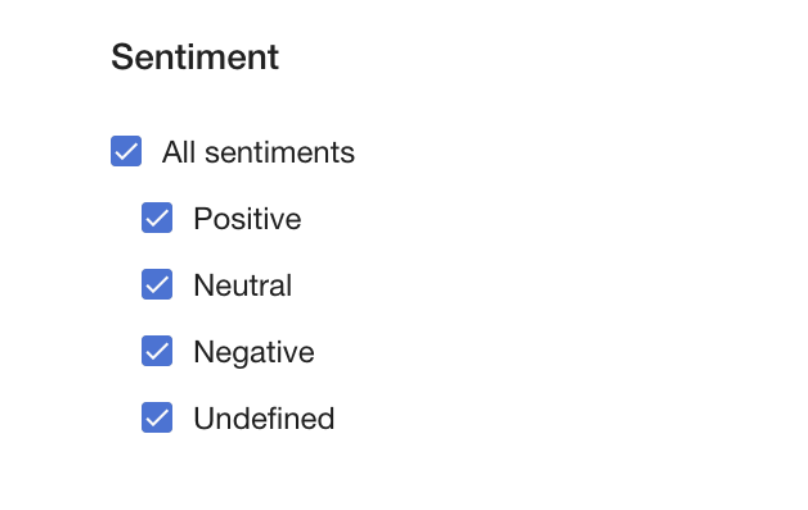
And you can click on Reports to get the complete sentiment analysis and data on:
- Sentiment ratio
- Sentiment by sources and channels
- Positive-negative sentiment ratio
- Sentiment over time
- Top influencers by sentiment
- Number of mentions per sentiment between you and your competitors
Look at your competition’s social media presence and websites
If your competitors have a solid social media presence, it’s worth checking out what kind of content they share, where they share it, and how often they share it.
You can filter the results in Determ by the source (but also by sentiment or date range), which makes managing the mentions much easier.
Do a hashtag research
If you see your competitors using hashtags on their social media posts or marketing campaigns, investigate which ones they use the most and how much engagement those posts get.
Do a little bit of research about them (are they broad or specific? does anyone else use them?) and try to come up with some of your own!
Determ allows you to set up the query for a particular hashtag.
Find out which influencers endorse your competition
If you want to get into the minds of your target customers, who better to look at than the people they already trust?
Find out which influencers endorse your competitors and see what kind of content they’re sharing when promoting your competitors. You might be able to find some new ideas for your content or even partnerships.
If you want to use influencer marketing successfully, Determ offers you a list of top influencers (your and your competitors’). Discovering influential sources which you’d hardly find through manual research is a great way to expand your network.
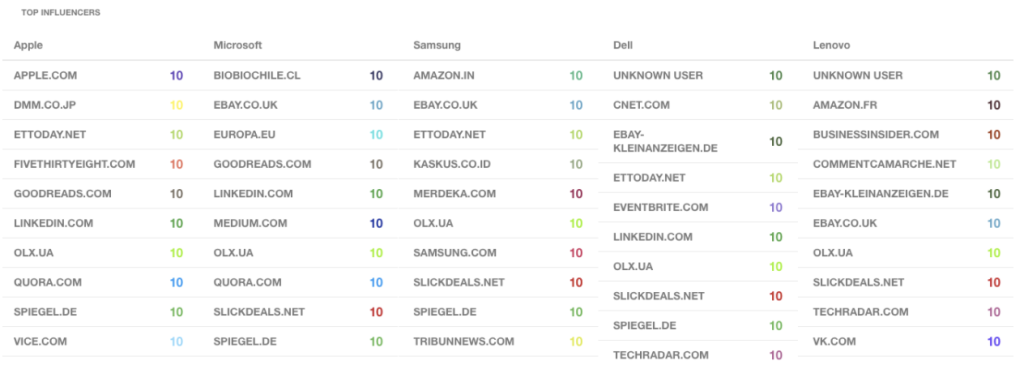
In Determ, you can see various influencer-related data about your keywords, such as:
- top influencers by number of mentions
- top influencers by source
- top influencers by reach
- top influencers by sentiment
#4 Compare competitor data to your mentions
Once you’ve looked into what the online world thinks of your competitors, it’s time to see where you stand compared to your competition.
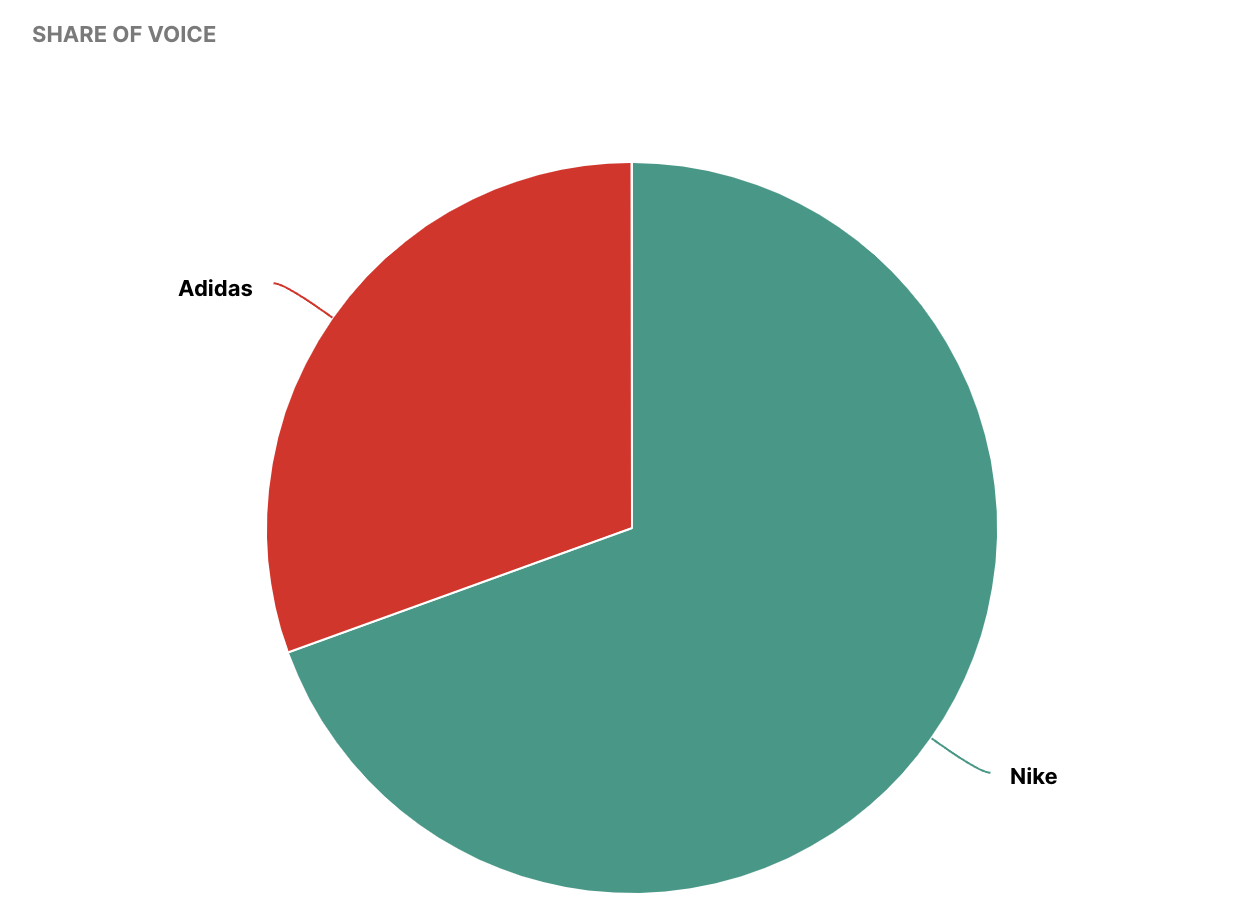
Click on Competitive analysis in Determ’s Reports, and see how you compare to your competition based on:
- share of voice
- total mentions per channel, source & sentiment
- share of impressions & total impressions
- mentions over time
- top influencers
#5 Turn on notifications
You can be informed about any changes, mentions, and updates wherever you are.
If you turn on your notifications, Determ notifies you when anything new happens. You can be informed in real-time (or receive daily or weekly updates) whenever your tracked keyword appears anywhere online.
You can react quickly to any buzz around you or prepare to offer a better solution if people are negatively buzzing about your competition.
#6 Generate a report
Now that you’ve gathered all the valuable data, it’s time to put it in a report. This will help you see how your competitors stack up against each other and where you can find space for improvement.
You can generate and download the report in Determ in a few clicks and adjust it to your needs.
As you can see, competitor analysis is pretty straightforward with the right tools and features. To boost your efforts even more, specific tools, such as Ahrefs, Kontentino, or Similarweb, could complement Determ. Let’s see how they work.
Other Useful Tools for Competitor Analysis
Ahrefs
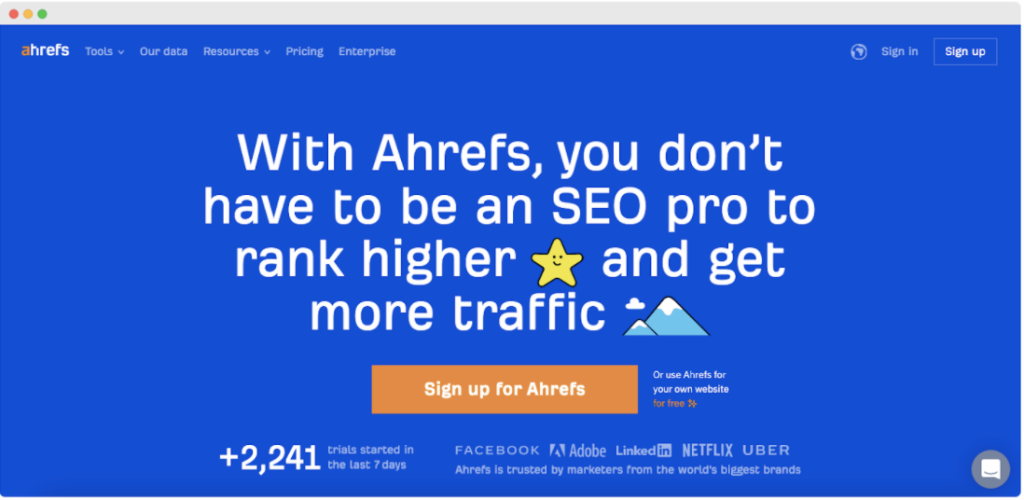
Ahrefs is a great tool to help you rank higher in search engines and receive more traffic. How does it help with competitive analysis?
With Ahrefs, you can see what keywords and phrases are driving your competitors’ sites to the top of search engine rankings. Using that information, you will know how to optimize content the best way to get more traffic from those same sources.
Kontentino
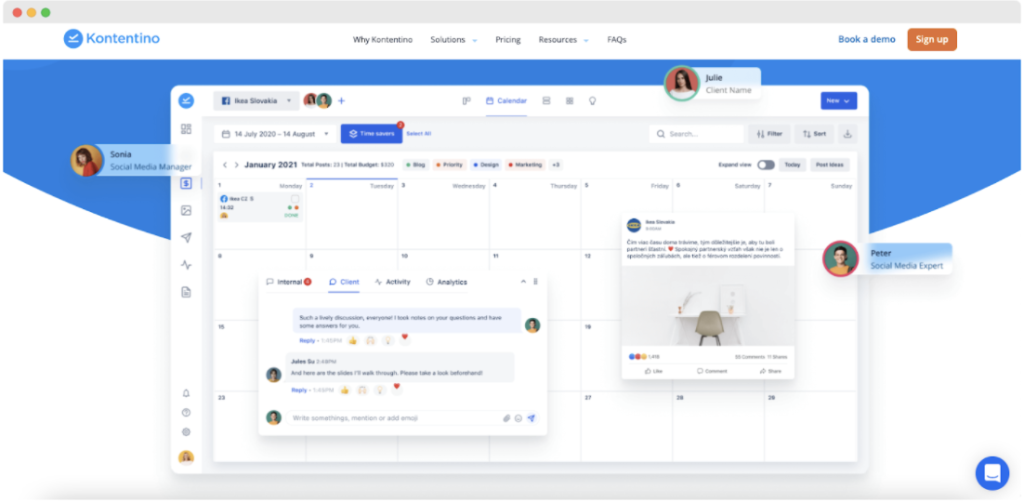
Kontentino is a powerful social media management tool with a very interactive interface and an excellent content calendar.
In addition to the many tools that make your job easier (such as bulk scheduling, creating, planning ads, etc.), Kontentino offers social media performance benchmarks and competitive analysis features.
Within seconds, it compares your performance to that of your competitors and gathers all the statistics you need to improve your social media strategy.
Read Top 11 Competitor Analysis Tools Every Marketer Should Know
Similarweb
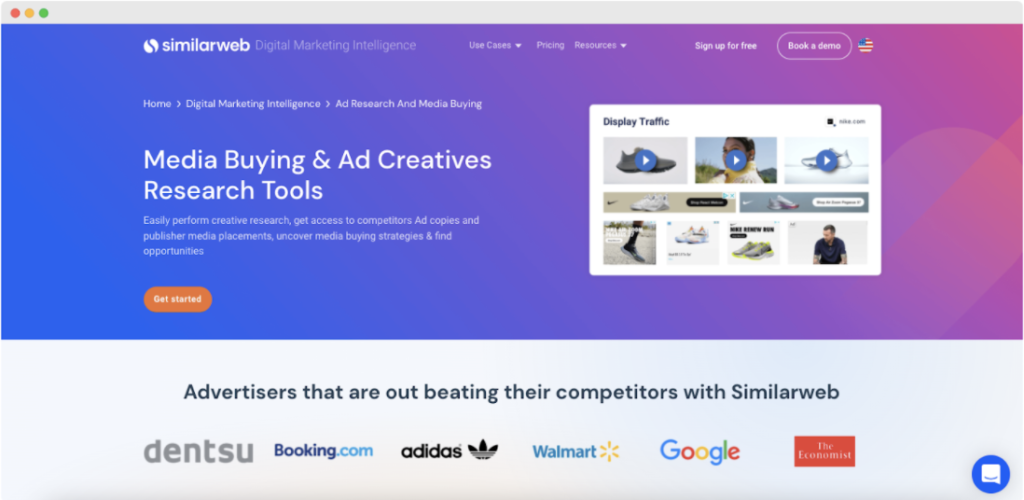
Similarweb is a tool that can provide you with insight into your competitors’ PPC and display campaigns. In addition, it allows you to benchmark your search ads to optimize them.
In short, Similarweb shows you the marketing strategies your competitors use across different channels and their acquisition strategies.
Stay ahead of your competition
Competitive analysis is crucial for businesses of all sizes and niches. If you want to get ahead of your competitors, you need to analyze various factors influencing your success. Although you can do some parts of it manually, conducting competitive analysis manually is time-consuming and insufficient in many ways.
Media monitoring tools, such as Determ, provide insights that you could not possibly get by gathering data manually. Determ allows you to monitor your competitors in real-time, which is virtually impossible in everyday work.
Book a call with one of our experts to try out Determ for a free trial, and reap all the benefits of timely information!

